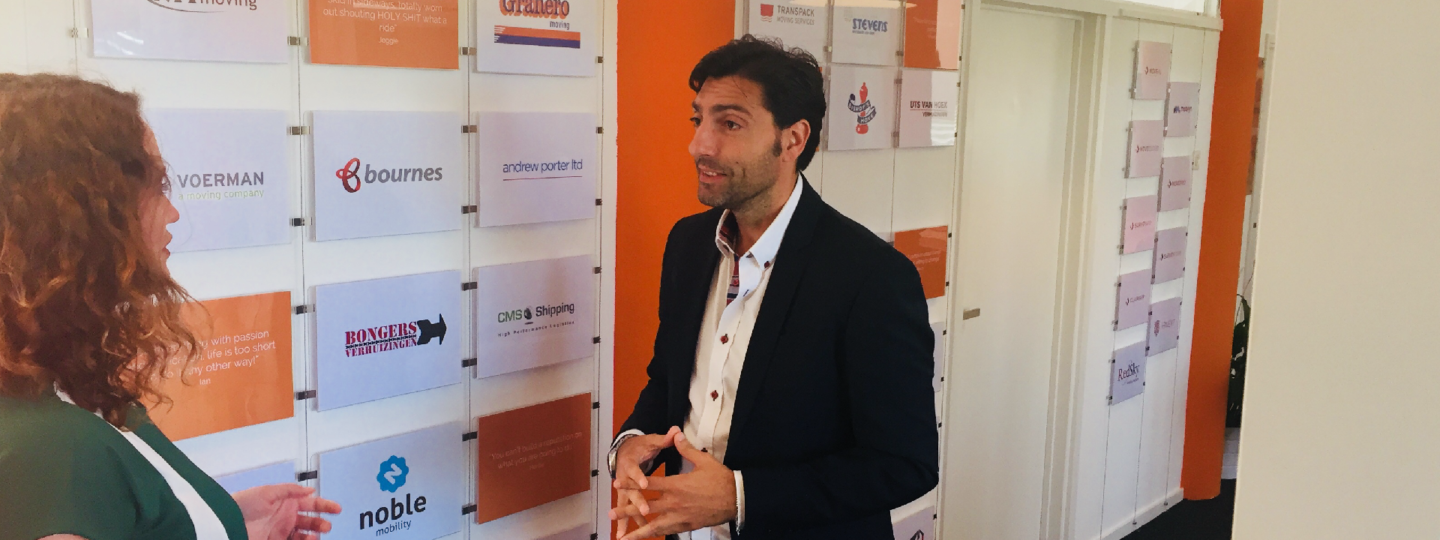Helping Delivering Excellence for Military Fami...
July 21, 2025The recent news that the U.S. Department of Defense has terminated its contract with HomeSafe All...
Read chevron_rightOur colleague Marco Maruccia was invited to write an article in The Portal about his take on technology in the moving industry. Below you can find the complete article!
Using a paper map to navigate around the country was ordinary 30 years ago. Buying a product was something you could only do in a physical store. Nowadays, we can buy anything we want online, and the world’s biggest retailers do not own a single physical store. And of course, apps allow us to navigate anywhere in the world. Over the past three decades, many industries have seen huge technological changes that streamline processes and services for companies as well as consumers.
But what about the moving industry? Some movers still rely on pen and paper to manage some of their activities. Almost
every function has been affected by innovation, but I have found that many companies have not yet embraced the technology that is available to them. Why?

These days, technology has a huge impact on our everyday lives
I believe some are slow to adapt because, in some respects, technology can be hard to implement in this business, primarily because of the complexity of the moving process. Technology is most effective in situations where processes and data flows are highly standardized. Such tasks have limited variables and are easy to automate.
For moving companies, the processes are more complicated, making them more challenging to standardize and, therefore, to digitalize. This industry is unique in that every aspect of moving entails different options and configurations. No two surveys are the same. Every client has different items, needs and requests for services. Moving is not just one process; it consists of multiple smaller, highly customizable tasks that all vary on a case-by-case basis. It’s different for other consumer-focused industries. In the hospitality industry, for example, the booking of a hotel room is standardized, with a few variables. The price of a room isn’t determined by the goods you are bringing along, or whether they need to be stored. You either take the room on an available date or decide to choose another. Moving is exactly the opposite. The customer decides on a preferred date, which goods he or she will move and whether the service (the move) will be consumed all at
once or in multiple stages.
I have been involved in the moving industry for more than 10 years and have developed a deep understanding of it. I have always been fascinated by the opportunities modern technology offers movers in increasing both efficiency and revenue. Six months ago I joined Move4U, which shares this vision. As a company with its roots in moving, Move4U began a few years ago with a simple roadmap of technological solutions. We now have a full suite of applications that have been embraced by many enthusiastic clients all over the globe.
Our products can save moving companies and their clients valuable time and money by allowing customers to conduct their own surveys. With the SurveyForm, clients can request a quote directly from the moving company’s website. The SurveyApp enables moving companies to provide their clients with an intuitive photo-based self-survey capability. We also offer tools to manage the entire moving process, from survey to packing list. The SurveyPro application enables you to do an inventory and create a quote immediately. CrewPro will take the pre-move survey information and allow your packing crew to simply update the information or create a packing inventory from the beginning.

Marco Maruccia, Vice President of Sales of Move4U
All of these apps are connected to MoveDashboard, the cornerstone of our various digital solutions. It synchronizes move data seamlessly between the apps and gives you 24/7 access to data. It is also possible to integrate our solutions into the system you are currently using. The key to our success is keeping it personal and knowing our clients and their needs. Our ultimate goal is to make moving processes more efficient and cost-effective for clients and their customers.
So as you can see, moving technology offers great advantages. Movers can save time and money by centralizing the management of customer and moving data. Time-consuming tasks can now be accomplished with just a click of a button. And when processes are automated, there is less room for error, saving moving companies valuable time normally spent on correcting mistakes.
Technology can make moving processes more efficient, as well as improve the service for your most important stakeholder: the customer. Consumers today expect a more personal service. They also want to use digital solutions that give them control over their move. The younger IKEA generation in particular often doesn’t want to spend time receiving multiple visitors to evaluate their inventory.
The way for movers to successfully implement technology is to do so step by step. Then, companies can separately accommodate each process and work toward a new, more efficient digital workflow tailor-made for the end user. It’s clear that the moving industry is in the midst of the technological revolution. Because the advantages can be tremendous for movers as well as for consumers, more and more companies are adapting. I am convinced that in another 30 years we will look back upon huge, positive transitions that are creating a better environment for movers and their customers.